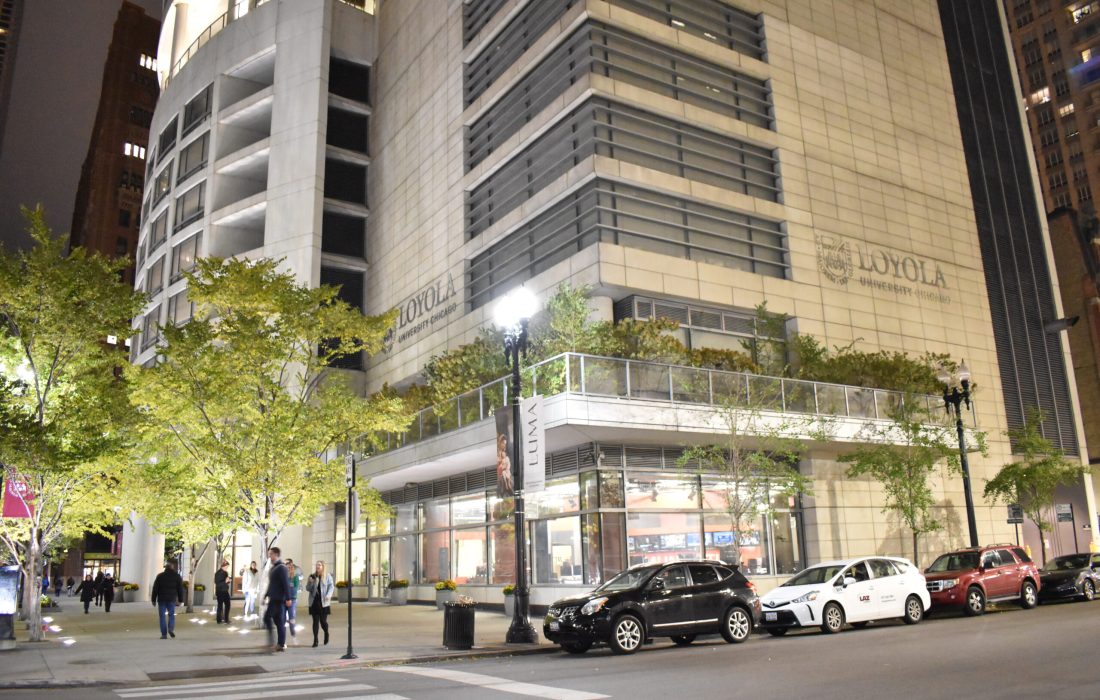The program is new this year and is funded by a grant from the Dana Foundation.
Neuroscience Meets Journalism: Loyola’s First Neuroscience and Journalism Writing Competition
Loyola’s Program for Neuroscience and Society is currently accepting submissions for their first ever Neuroscience Journalism Writing Competition. The competition is funded by a $1 million grant from the Dana Foundation awarded to help implement methods for getting involved in neuroscience research.
The Neuroscience Journalism Competition is an article writing competition focusing on neuroscientific discoveries, treatments, technologies and other subjects related to the topic of neuroscience.
The competition is open to students of any major, not solely journalism or STEM majors, according to Vanacker.
The articles will be judged on their connection to neuroscience, relevance to society and how well they are able to draw the reader in, according to Dr. Bastiaan Vanacker, an associate professor of communication.
“People think about neuroscience, it might seem like there’s not a lot there, but I think once people start digging a little bit deeper there’s a lot of stories to be uncovered,” Vanacker said.
The article should be approximately 1,200 to 1,500 words and could include visuals such as photos, graphics or illustrations, according to Vanacker. Loyola faculty and outside experts will judge the papers anonymously. The deadline for submissions for the contest is Dec. 2.
The Dana Foundation reached out to higher education institutions interested in exposing students to neuroscience research. The news of the application for the grant came to Dr. Bill Rochlin, an associate professor of developmental neurobiology on May 18, 2022.
Rochlin, the head principal investigator for the competition, and three other co-PIs applied for a planning grant from Dana on July 7, 2022. Rochlin said the Dana Foundation funded the planning grant of $150,000 in September, 2022. Dana ended up liking the work carried out and the future plans, and allowed them to apply for the $5 million grant April 16, 2022.
The first two places were awarded but Loyola came in third, but the Dana Foundation liked the ideas so much they presented Loyola a $1 million dollar grant ($500k/yr for two years), according to Rochlin.
“We’ve seen with COVID how important it was to get good quality science journalism,” Vanacker said. “I do believe in the need to improve and stimulate the thinking, the quality of science journalism.”
The idea of the competition is to expose those who don’t typically work in the field, such as journalism majors, to neuroscience, Vanacker said.
Patricia Lamberti, multimedia journalism program director, said it is widely important for students issues such as climate change and mental health and students should not be afraid of learning how to report science topics.
“Journalism majors often tell themselves that they have chosen a journalism degree because they like writing,” Lamberti said. “Often falsely tell themselves that they are not good at science or math, but that’s not true.”
Lamberti said journalists are excellent at research and dissecting information since every story comes down to facts.
Currently only undergraduates enrolled at Loyola can participate in the writing competition although in the spring, the Program for Neuroscience and Society plans to run the same competition nationwide.
It is not determined yet if students who submitted an article to Loyola’s Neuroscience Journalism competition can also submit the same article to the nationwide-version of the Neuroscience Journalism Writing competition, according to Vanacker.
The top three submissions will receive cash rewards of $1000, $500 and $250, respectively, and the winning articles will be published on the Program for Neuroscience and Society website. The winning authors are required to attend a small award ceremony to receive their cash reward.
Contest submissions can be created by individuals or teams. To encourage collaboration between STEM students and non-STEM students, if an approved partnership of a STEM and non-STEM student submit a winning project their reward money will be doubled.
“I think it’s really important for journalism students and the journalism faculty to interact and learn more and meet more neuroscience students, neuroscience faculty and vice versa,” Lamberti said. “We need to learn how the two programs complement one another and how we can work together better.”
Students should compete in the contest to experience writing outside of their “comfort zone,” Vanacker said.
“I just love reading student work that’s a result of people getting out of their comfort zone,” Vanacker said. “It’s so easy to do what you’re good at, and that’s normal, but I think to be successful as a journalist in today’s media landscape, you have to be a jack of all trades.”
Topics
Get the Loyola Phoenix newsletter straight to your inbox!



